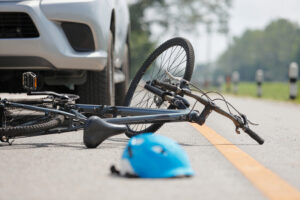
Let us start with a hypothetical situation. A passenger is in a vehicle that was being operated by a drunk driver who hits a tree. Suppose that passenger knew that the driver had been drinking and was intoxicated before the crash. In that case, he or she could be barred from recovering anything against that drunk driver for assuming the risk of being in a car with an intoxicated operator.
Virginia’s Civil Model Jury Instruction No. 6.100 states:
If you find by the greater weight of the evidence that the plaintiff fully understood the nature and extent of a known danger, and if he voluntarily exposed himself to it, he assumed the risk of injuring himself from that danger. The plaintiff cannot recover for injuries that proximately resulted from assuming the risk of a known danger.
Meaning, in Virginia, if you voluntarily expose yourself to a known danger and injure yourself from that danger, you could be barred from recovery against anyone or entity that might have also caused your injury.
The Supreme Court of Virginia reiterated this in Thurmond v. Prince William Prof’l Baseball Club, 265 Va. 59 (2003), stating that the assumption of risk occurs when an individual fully understands the nature and extent of a known danger and voluntarily exposes herself (or himself) to that danger.
In the Thurmond case, the plaintiff was struck by a foul ball during a minor league baseball game, where she suffered from facial fractures, injuries to her right eye socket, and extensive nerve damage. The plaintiff conceded that she remained alert throughout the game and observed hitters and batted balls for more than seven innings before being injured. She was familiar with the game of baseball, knew the risk of being injured by a batted ball, and exposed herself to that risk by remaining seated in an unscreened area.
The Virginia Supreme Court upheld the trial court’s decision to sustain the defendant’s motion to strike based on the plaintiff assuming the risk of attending a baseball game knowing the risk of being hit by a foul ball.
Assumption of Risk Overview
Hazardous living fills our landscape with recreational activities such as skydiving, zipline courses, and bungee jumping. However, other activities like watching a professional or recreational sporting event, bouncing at the local trampoline park, driving a car, or even walking on a wet floor also come with some form of risk.
In Virginia, when an individual or entity is accused of causing an accident or injury, they need to provide substantial proof that assumption of risk applies in their case for it to bar the plaintiff from recovery. The common example of this is the Thurmond case stated above. An adult who is aware of the game of baseball and goes to a game assumes the risk of possibly getting struck with a baseball. An assumption of risk defense is considered an affirmative defense, and the burden is on the defendant to prove that the plaintiff assumed such a risk.
Assumption of Risk Made Easier For Defendants—§ 8.01-227.19
In Virginia, certain aspects of the law can help make it easier for defendants to prove assumption of risk against a plaintiff, such as the Winter Sports Safety Act, specifically Virginia Code § 8.01-227.19.
This code section states, “a winter sports participant shall be presumed to have known the inherent risks of the winter sport in which he participates, to have fully appreciated the nature and extent of such risks, and to have voluntarily exposed himself to such risks, even if a particular risk was not specifically presented or stated to the participant by the operator.”
This Virginia statute specifically codifies assumption of risk in winter sports. Most notably, this applies to skiing and snowboarding down a mountain. If you injure yourself skiing or snowboarding down a mountain because of inexperience or hitting some unseen ice, you assumed the risk of this winter activity. You will unlikely be able to pursue a cause of action against the ski resort.
Curcio Law is here to help you explore legal options regarding an injury involving assumption of risk. For more information, call or text us at 703-836-3366, email info@curciolaw.com, or visit www.curiciolaw.com.

Justin Curcio joined Curcio Law in January 2020. Justin received his J.D. from St. John’s University School of Law in 2015. After passing the Virginia Bar in 2015, Justin was in-house counsel for an insurance defense firm (Allstate/Esurance/Encompass) for over four years before joining Curcio Law. During law school, he worked for the Nassau County District Attorney’s Office and the law firm of Bartlett, McDonough & Monaghan, LLP. Contact Justin at jcurcio@curciolaw.com.










Comments for this article are closed.